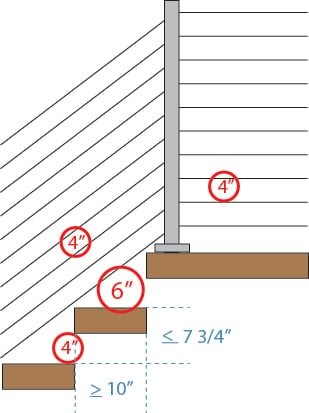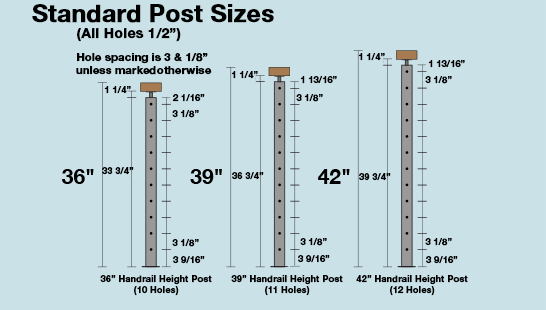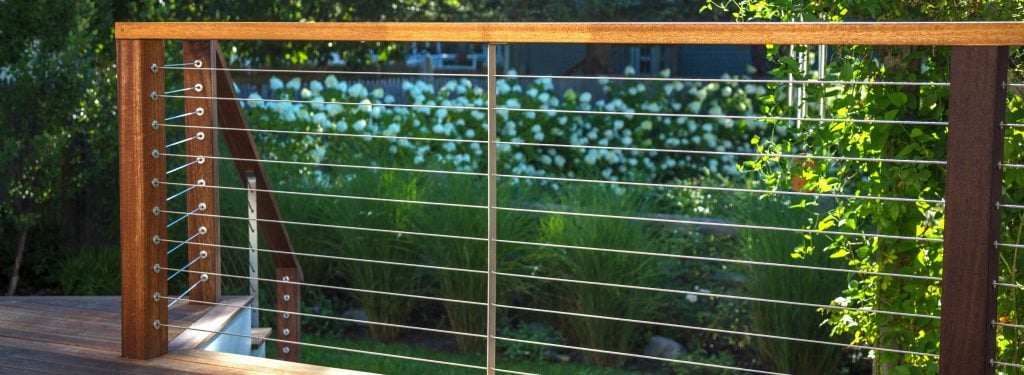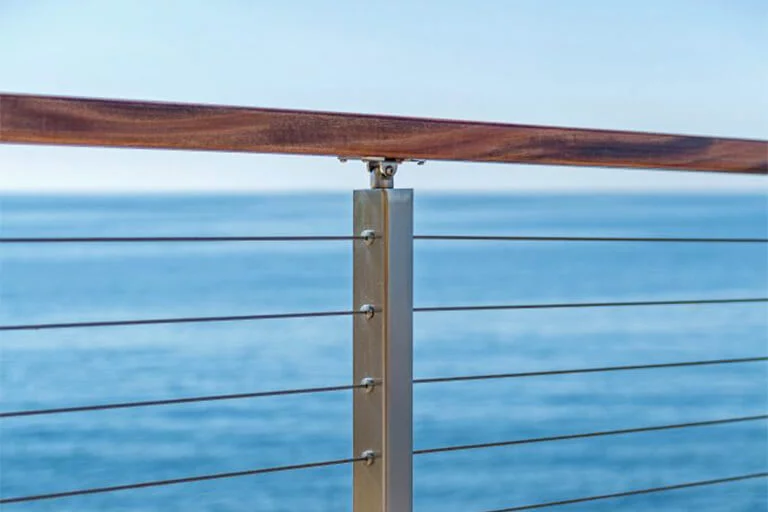Quick Points
Cable Railing Code & Guardrail Requirements
Whether you are installing cable railing on a deck, staircase, or balcony, it’s important to make sure that your railing system is up to code. There are specific requirements for each aspect of the railing system, such as handrail height, the amount of pressure that the system must be able to withstand, and how far apart the posts must be spaced.
In general, cable railing code requirements come from two different sources:
-
- The IRC (International Residential Code)
- Local, city, or state codes (For example here is California’s Guardrail Code)
Is Cable Railing Safe?
When built to code, cable railing is a very safe option for railing. However, building code can be a challenge to navigate. Within this page, you’ll find helpful information about horizontal railing codes, and how Viewrail cable railing products – including Onyx and Endurance rod infill upgrades – are designed to exceed those code requirements without sacrificing on beautiful aesthetic and design.
What are the Codes Affecting Cable Railing?
A number of code stipulations will apply to your project given its environment: residential or commercial. While there are some standards for railing for both residential and commercial projects, local code presents minor differences that are important to consider. We always recommend verifying your project details with a local code official before finalizing a project. Most often, horizontal railing systems are subject to the Sphere Rules, Handrail & Guardrail Height Requirements, and Load Requirements.

Sphere Rules
In any guide to cable railing code, you’ll hear reference to the 4 inch Sphere Rule. Additionally, if stairs are involved, you will hear the 6 inch Sphere Rule referenced.
What is the 4 inch Sphere Rule?
The 4 Inch Sphere Rule refers to naturally occurring gaps and spaces within a railing system. The rule states that a 4” sphere should be unable to pass through any gap in a railing system. This is why Viewrail posts are drilled with holes 3 ⅛” center-to-center, to avoid any deflection exceeding 4 inches.
6” Sphere Rules
The exception to the 4 inch sphere rule is the gap created between the bottom run of infill and the 90 degree angle created where the rear of a stair tread meets a stair riser (consult the diagram above for reference). The rule states a 6 inch sphere should be unable to pass through this triangular gap.
Handrail & Guardrail Height
Handrail & guardrail are commonly confused as being the same component of a railing system.
Guardrail refers to the structural railing element that sits atop a railing system. A guardrail is typically required for stairs with 4-or-more risers, or for a deck or balcony with 30 inches above grade. Code requires guardrail in residential structures be a minimum of 36 inches. Some areas require taller guardrail. Be sure to check with your code official regarding your area’s guardrail height requirements.
Handrail refers to a graspable element of a railing system designed to assist you in ascending or descending a staircase. Code requires handrails be mounted between 34 and 38 inches. Code also requires handrails return into a wall or structural member of the railing system. This allows everyone from homeowners to first responders to safely traverse a staircase without snagging clothing or equipment on a handrail and falling down a staircase.
Force & Load Requirements
Another common code requirement you’ll hear about during a horizontal railing project covers load requirements, or a certain amount of pressure either applied to a specific point of a railing system or distributed throughout the system by linear foot.
Handrails and guardrails and structural members of a railing system are required to withstand 200lbs of concentrated force in any direction. Intermediate structures are only required to withstand 50lbs of concentrated force.
At Viewrail, we’ve tested each part of our system to a 4x safety factor to ensure our systems are as structurally sound as they are aesthetically pleasing.
What is the spacing for cable railing?
To ensure your system performs as well as designed, be sure to space structural posts no more than 4ft apart center-to-center. If you’re using a wood post system, you’ll need a structural post every 8ft with intermediate (non-load-bearing posts) spaced every 4ft between structural posts.
This measure also ensures your cables will remain properly tensioned and deflect as little as possible.
What is Proper Tensioning?
Following deck cable railing code will allow you to create a safe and sturdy system. Once your system is installed, another vital element is proper tensioning. Following cable railing code is essential to a cable railing system that will perform optimally for years to come.
Pro Tips for Proper Tensioning:
- Measure twice, cut once . This an old adage for a reason. The more precise your cuts, the less likely you are to bottom out the threads on your tension receivers.
- Always crimp your cable railing components twice.
- Follow the tensioning diagram, beginning with your center-most run of railing and alternating towards your outer-most runs at the top and bottom of your posts.
- Be careful not to tension your cable railing too much. In some instances, this can bow handrail.


